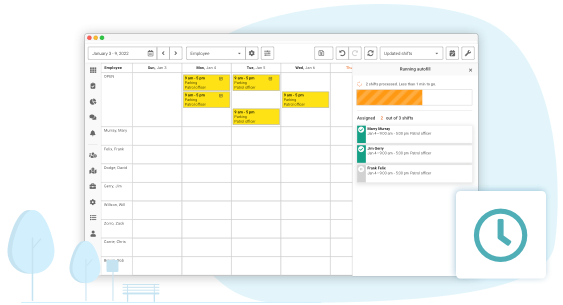When one thinks of successful leaders, we think of Steve Jobs, Kobe Bryant, Mary Barra, and others. We hear their stories every day. We paint their murals with their motivational quotes and aspire to be successful leaders just like them. However, while they guide us with their mantras for success, we forget to embrace who we are and what we define as success. After all, we don’t have to be a CEO or an NBA champion to be a successful leader. To be a successful leader in the workplace, there are many business leadership skills that need to be developed.
Before we explore these skills and abilities, let’s understand why we want to be successful leaders in the workplace.
What exactly is a successful leader?

The definition of a leader is open for interpretation. Still, to a majority, we define leadership as using power and influence to direct followers’ activities toward goal achievement. It’s often difficult to judge leaders based on objective measures such as sales revenue or years of experience.
The goals that any workplace attempts to achieve go beyond these objective measures, and they often tend to be the differentiator between successful and not-so-successful leaders. The one certain measure that defines a leader in a workplace as successful or unsuccessful is the employees.
Why are some leaders more effective than others?
A person can only be defined as a leader if they have the ability to lead or direct their employees towards the company goals. The effectiveness of business leadership is often challenging to maintain when there are lots of employees to be managed.
Employees often tend to resort to transfer requests or absenteeism when they feel overlooked. At such times, it can become challenging to retain the most talented employees. A successful leader often has to be proactive in forming such relationships with their employees to minimize these numbers.
While various theories are available online explaining the different ways leaders and employees interact, the greater focus is to identify the skills and actions that leaders have that make them more effective. In particular, leaders engage in three types of activities that can help decide whether they are effective or not.
DECISION-MAKING STYLES:

Decision-making is one of the most critical roles for a successful leader. The leader’s decision-making style is the process a leader uses to decide based on a set of alternatives. The main element of decision-making styles that vary among leaders is the involvement the rest of the employees have in decision-making.
Good leadership doesn’t necessarily mean making all the business decisions for a company. Decision-making styles vary between a range of high employee control to high leader control. An autocratic style would mean the leader is deciding by themselves without seeking their employee’s suggestions.
Conversely, in a facilitative or delegative style, leaders present the problem to the employees and give them equal or greater power in making the best decisions for the company. Research studies have shown that allowing employees to participate in decision-making increases their job satisfaction and help develop their decision-making skills.
However, studies have also shown that employees feel dissatisfied with their jobs if they spend more hours in meetings which are run to help make decisions for the company, whether or not they are as important as the other tasks they are missing out on.
DAY-TO-DAY BEHAVIOURS:
Fundamentally, a successful leader’s day-to-day role is to initiate structure within the working environment and make different considerations. To emphasize, initiating structure entails defining and structuring the roles of employees in pursuit of goal attainment. Some of the ways a leader initiates structure are:
- Initiation: Originating, facilitating, and sometimes resisting new ideas and practices
- Organization: Defining and structuring work, clarifying leader versus member roles, and coordinating employee tasks
- Production: Setting goals and providing incentives for the effort and productivity of employees
Leaders require to play a very active role to initiate structure. To emphasize making different considerations, leaders must form relationships with employees characterized by mutual trust, respect for employee ideas, and consideration of employee feelings. Some of the ways a leader shows consideration are:

- Membership: Mixing with employees, stressing informal interactions, and exchanging personal services
- Integration: Encouraging a pleasant atmosphere, reducing conflict, and promoting individual adjustment to the group
- Communication: Providing information to employees, seeking input from them, and showing an awareness of matters that affect them
- Recognition: Expressing approval or disapproval of the behaviours of employees
- Representation: Acting on behalf of the group, defending the group, and advancing the interests of the group
Together, a high level of consideration and initiating structure effectively improve employees’ job performance and satisfaction.
TRANSFORMATIONAL LEADERSHIP
The missing piece for many leaders that make them effective is the way they inspire their employees. Transformational leadership is a pattern of behavior that can effectively encourage employees to commit to a shared vision for the company.
This approach is somewhat more motivational than managerial, as the objective of business leadership is to transform the way employees look at the tasks. In this perspective, leaders inspire employees to focus on the collective good rather than short-term self-interest. In contrast to a transactional leadership style, the leader doesn’t have to micromanage their employees to reward or discipline employees based on performance.
How do you become a successful leader in the workplace now?
To become a successful leader in your workspace, some reliable techniques or changes in behaviors can be used.
1. UNDERSTAND YOUR LEADERSHIP STYLE:
You can use many unique combinations of leadership styles that best fit your and your workplace’s interest. Assess the sort of leadership that is comfortable with you and is effective with your employees.
“Be the change you want to see in the world.”
As their leader, employees see you as role models and consequently follow how you display different qualities.
2. PRACTICE OPEN COMMUNICATION:
A successful leader can communicate effectively regardless of how large or small the group setting is. Effective communication can only take place if there is a strong relationship between the leader and the employees. A professional relationship can only be strengthened if leaders are good listeners and communicators.

Actively listening is one of the traits of effective leadership that is often overlooked. How can you lead a team if you don’t understand their day-to-day? Recognizing each employee for their efforts, being open to new ideas, and admitting mistakes are a few of the things that can make you an effective leader.
3. ENCOURAGE AND REWARD CREATIVITY:
Creativity is a big sign that an employee goes beyond task expectations to make things better for the entire organization. Giving the opportunity and incentive to be creative around complex tasks can make employees feel challenged and, as a result, more enthusiastic. Great leaders do this every day in their workplace, and use their effective decision making to determine a course of action.
4. USE THE NECESSARY TOOLS THAT ENABLE YOUR TEAM TO GO ABOVE AND BEYOND:
There are a lot of tools available externally and internally that can transform a good leader into a successful leader. Managing your workforce can often be done with different software such as employee scheduling software that is available today to make lives more accessible and efficient for employers and employees.
Such software provides companies with greater efficiency and clarity over work distribution, giving the workforce more time to do the assigned tasks. Similarly, there are internal tools that leaders can use to enable their team to go above and beyond. These tools include keeping a positive attitude, becoming “inspiring,” and considering other employees’ ideas. All these tools can help employees feel much more open to sharing their projects and goals with you.

5. EMBRACE FAILURE:
“Failure is not the opposite of success; it’s a part of success”. Leaders often fail to recognize that a failure is an option. More often than not, leaders that fail to acknowledge this end up failing more. As a result, successful leaders must embrace failure as much as they embrace success.
If a leader is willing to admit mistakes and embrace unsuccessful ideas, they can finally be a successful leader. After all, isn’t that the success story behind Steve Jobs?
Leadership roles are not always easy to fill. They require emotional intelligence above all else – after all, you’re managing people, and people are emotional beings. Understanding your own strengths and weaknesses as a leader is KEY to your own personal and professional growth. If you want to improve your own leadership qualities, start by identifying your weak spots, and identify opportunities to improve them.




